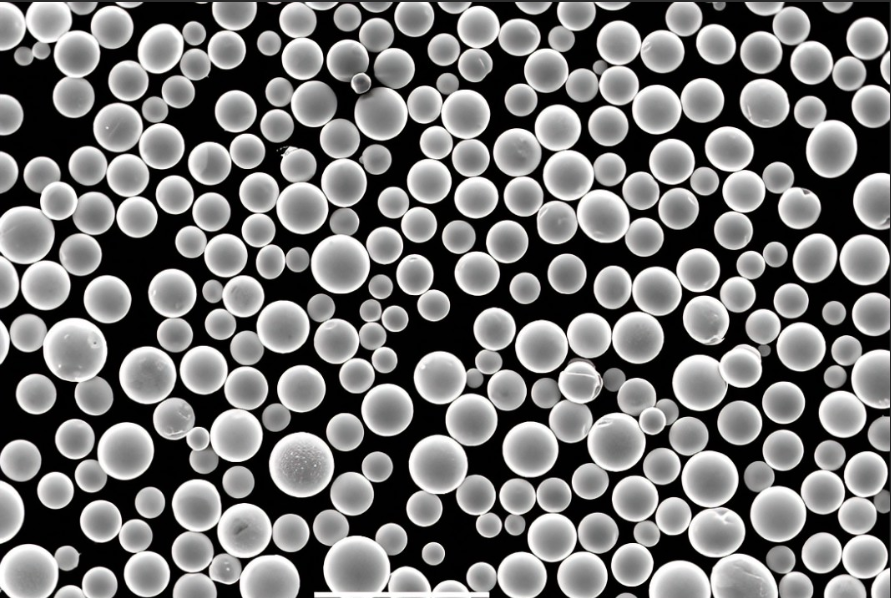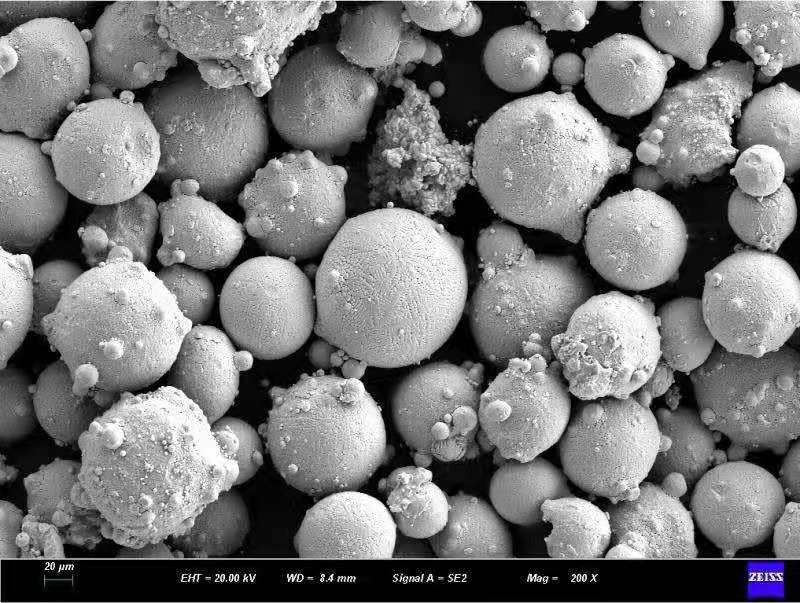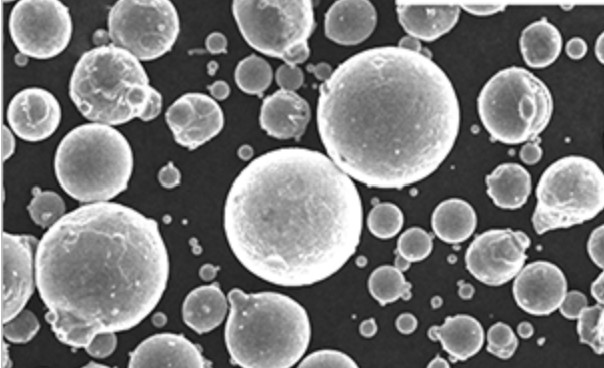In the world of additive manufacturing, titanium powder 3D printing has emerged as a groundbreaking technology, revolutionizing the way we manufacture and design complex components. This innovative process allows for the creation of intricate geometries, lightweight structures, and custom-made products that were once impossible or cost-prohibitive to produce. In this article, we will delve into the fascinating world of titanium powder 3D printing, exploring its advantages, challenges, applications, and future trends.
1. Introduction
Titanium powder 3D printing, also known as additive manufacturing, is a process where successive layers of titanium powder are selectively fused together to create a three-dimensional object. This method offers several advantages over traditional manufacturing techniques, making it a preferred choice in various industries. From aerospace and healthcare to automotive and jewelry, titanium powder 3D printing is transforming the way we approach design and production.

2. Advantages of Titanium Powder 3D Printing
1. Lightweight and High Strength
One of the key advantages of titanium powder 3D printing is the ability to produce lightweight yet incredibly strong components. Titanium is renowned for its exceptional strength-to-weight ratio, making it ideal for applications where weight reduction is critical, such as aerospace and automotive industries. By utilizing intricate lattice structures and optimizing material distribution, designers can create parts that are both lightweight and structurally robust.
2. Design Freedom and Complex Geometries
Unlike traditional manufacturing methods, which often impose limitations on design due to manufacturing constraints, titanium powder 3D printing offers unparalleled design freedom. Complex geometries, internal channels, and organic shapes can be effortlessly realized, opening up new possibilities for innovative designs. This level of flexibility enables engineers and designers to create highly customized and optimized products for specific applications.
3. Cost-Effective Production
While the initial investment in titanium powder 3D printing equipment may be relatively high, the technology offers significant cost savings in the long run. Unlike subtractive manufacturing processes, where excess material is removed, additive manufacturing minimizes material waste, resulting in cost-efficient production. Additionally, the ability to consolidate multiple parts into a single component further reduces manufacturing costs, assembly time, and maintenance requirements.
4. Reduced Material Waste
Traditionally, the production of complex parts often resulted in a significant amount of material waste. Titanium powder 3D printing eliminates this issue by only utilizing the exact amount of material required for the part, reducing waste and improving sustainability. The ability to recycle and reuse excess powder further contributes to the eco-friendliness of this manufacturing method.
5. Rapid Prototyping and Customization
Titanium powder 3D printing accelerates the product development cycle by enabling rapid prototyping and iterative design iterations. Designers can quickly produce functional prototypes, test their performance, and make design modifications in a matter of days, rather than weeks or months. This speed and agility in prototyping translate into faster time-to-market and the ability to respond swiftly to customer demands. Moreover, the technology facilitates customization, allowing for personalized products tailored to individual needs.

3. Challenges and Limitations of Titanium Powder 3D Printing
While titanium powder 3D printing offers numerous advantages, it also comes with its fair share of challenges and limitations. Understanding and addressing these factors is crucial for maximizing the potential of this technology.
1. High Initial Investment
Investing in titanium powder 3D printing equipment and infrastructure can be a significant financial commitment, especially for small and medium-sized enterprises. The cost of the machinery, maintenance, and training can pose a barrier to entry for some businesses. However, as the technology advances and becomes more widespread, costs are expected to decrease, making it more accessible to a broader range of industries.
2. Limited Availability and High Cost of Titanium Powder
Titanium powder is a specialized material that is not as readily available as other metals. Its production and processing involve complex procedures, leading to a higher cost compared to conventional metals. The limited supply and high cost of titanium powder can restrict the scalability and adoption of titanium powder 3D printing, particularly for large-scale industrial applications. Efforts are being made to improve the production processes and explore alternative sources to mitigate these challenges.
3. Post-Processing Requirements
After the printing process is complete, post-processing is often required to achieve the desired surface finish, dimensional accuracy, and mechanical properties. This may involve processes such as heat treatment, machining, polishing, or coating. Post-processing can add time and cost to the overall manufacturing process and requires specialized skills and equipment.
4. Surface Roughness and Porosity
Titanium powder 3D printing can result in surface roughness and porosity, which may affect the mechanical properties and performance of the printed parts. The optimization of printing parameters, powder quality, and post-processing techniques can help mitigate these issues. Ongoing research and development efforts are focused on improving the surface quality and reducing porosity in printed titanium parts.
5. Quality Control and Certification
Maintaining consistent quality and ensuring the reliability of titanium powder 3D printed parts is crucial, particularly in industries with stringent safety and performance standards. Establishing robust quality control processes and obtaining the necessary certifications is vital to gain the trust of end-users and regulatory bodies. Standards and guidelines specific to titanium powder 3D printing are being developed to address these concerns.

4. Applications of Titanium Powder 3D Printing
Titanium powder 3D printing finds application across various industries, thanks to its unique properties and design capabilities.
1. Aerospace and Aviation Industry
The aerospace sector benefits greatly from titanium powder 3D printing due to its lightweight characteristics, high strength, and excellent corrosion resistance. It enables the production of complex, lightweight aircraft components, such as turbine blades, fuel nozzles, and structural brackets, resulting in fuel efficiency improvements and reduced emissions.
2. Medical and Dental Implants
In the medical field, titanium powder 3D printing has revolutionized the production of implants and prosthetics. It allows for the creation of patient-specific implants tailored to the individual’s anatomy, ensuring a better fit and improved functionality. Titanium’s biocompatibility and corrosion resistance make it an ideal material for applications such as hip replacements and dental implants. Customized dental crowns, bridges, and orthodontic devices can be 3D printed with precision, improving patient comfort and treatment outcomes.
3. Automotive Industry
The automotive industry benefits from titanium powder 3D printing in various ways. It enables the production of lightweight and durable components, enhancing fuel efficiency and performance. Engine parts, exhaust systems, and suspension components can be optimized for weight reduction and improved strength, contributing to overall vehicle performance and sustainability.
4. Jewelry and Fashion Industry
The intricate and unique designs often sought after in the jewelry and fashion industry can be easily achieved through titanium powder 3D printing. This technology allows designers to create complex and personalized jewelry pieces with delicate details that were once challenging to produce using traditional methods. Titanium’s lightweight nature and hypoallergenic properties further enhance its appeal in the world of high-end jewelry.
5. Tooling and Manufacturing
Titanium powder 3D printing offers significant advantages in tooling and manufacturing processes. Complex molds, dies, and jigs can be 3D printed, reducing lead times and costs associated with traditional manufacturing methods. The ability to create customized tooling with intricate features improves efficiency and productivity in various industries, including aerospace, automotive, and consumer goods.

5. Materials and Techniques in Titanium Powder 3D Printing
1. Titanium Alloys and Their Properties
Various titanium alloys are commonly used in powder 3D printing, each offering unique properties suitable for specific applications. Popular titanium alloys include Ti6Al4V (Grade 5), which combines excellent strength, corrosion resistance, and biocompatibility, and Ti6Al4V ELI (Extra-Low Interstitial), which is specifically designed for medical and dental applications.
2. Powder Bed Fusion (PBF) Process
The powder bed fusion process is widely employed in titanium powder 3D printing. It involves spreading a layer of titanium powder onto a build platform, followed by selective laser or electron beam melting of the powder particles based on the 3D model’s specifications. The process is repeated layer by layer until the final object is formed.
3. Direct Energy Deposition (DED) Process
The direct energy deposition process involves feeding titanium powder into a focused energy beam, such as a laser or electron beam, while simultaneously melting the powder and depositing it onto a substrate. This technique is often used for large-scale components, repair and refurbishment of existing parts, and the creation of near-net-shape objects.
6. Future Trends and Innovations in Titanium Powder 3D Printing
The field of titanium powder 3D printing is constantly evolving, with ongoing research and development driving future advancements. Some notable trends and innovations to watch out for include:
1. Improved Materials and Alloys
Researchers are exploring new titanium alloys and composite materials that offer enhanced properties, such as improved strength, biocompatibility, and heat resistance. These materials will expand the range of applications and further optimize performance in various industries.
2. Enhanced Printing Technologies
Continued advancements in printing technologies, including higher-resolution printers, faster printing speeds, and improved precision, will contribute to the widespread adoption of titanium powder 3D printing. This will enable faster production cycles, larger-scale manufacturing, and increased design possibilities.
3. Integration of Artificial Intelligence and Machine Learning
The integration of artificial intelligence and machine learning algorithms into the 3D printing process holds great potential for optimizing parameters, improving efficiency, and ensuring consistent quality. AI-powered software can analyze data from previous prints, identify patterns, and optimize printing parameters to achieve the desired results.
4. Large-Scale Production and Industrial Adoption
As the technology matures and becomes more cost-effective, there will be a shift toward large-scale production using titanium powder 3D printing. This will result in a wider range of applications, increased efficiency, and cost savings across industries such as aerospace, automotive, and medical.

7. Conclusion
Titanium powder 3D printing is transforming the manufacturing landscape, offering unprecedented design freedom, lightweight structures, and cost-effective production. Its applications span across industries, from aerospace and healthcare to automotive and jewelry. While there are challenges to overcome, ongoing research and development are paving the way for future advancements in materials, printing technologies, and quality control. As the technology continues to evolve, titanium powder 3D printing holds the potential to revolutionize the way we produce and design complex components, opening up new possibilities for innovation and customization.
FAQs
1. Is titanium powder 3D printing cost-effective? Titanium powder 3D printing can be cost-effective in the long run due to reduced material waste and the ability to consolidate multiple parts into a single component. However, the initial investment in equipment and the high cost of titanium powder can be a barrier for some businesses.
2. Can titanium powder 3D printing be used for medical implants? Yes, titanium powder 3D printing is widely used in the production of medical implants, such as hip replacements and dental implants. Its biocompatibility, lightweight nature, and the ability to create customized designs make it an ideal choice for medical applications.
3. What are the limitations of titanium powder 3D printing? Some limitations of titanium powder 3D printing include the high initial investment, limited availability and cost of titanium powder, post-processing requirements, surface roughness, and porosity. Quality control and certification are also important considerations.
4. How does titanium powder 3D printing benefit the aerospace industry? Titanium powder 3D printing offers lightweight and strong components, which are crucial in the aerospace industry to improve fuel efficiency and reduce emissions. Complex geometries and customized designs can also be achieved, allowing for optimized aerospace components.
5. What are the future trends in titanium powder 3D printing? Future trends in titanium powder 3D printing include the development of improved materials and alloys, enhanced printing technologies, integration of artificial intelligence and machine learning, and large-scale industrial adoption. These advancements will further expand the capabilities and applications of this innovative manufacturing method.
In conclusion, titanium powder 3D printing is a game-changing technology that is reshaping manufacturing and design across industries. Its unique advantages, such as lightweight and high-strength components, design freedom, and cost-effective production, make it an attractive option for various applications. As the technology evolves and overcomes its challenges, we can expect to witness even more remarkable innovations in the world of titanium powder 3D printing.